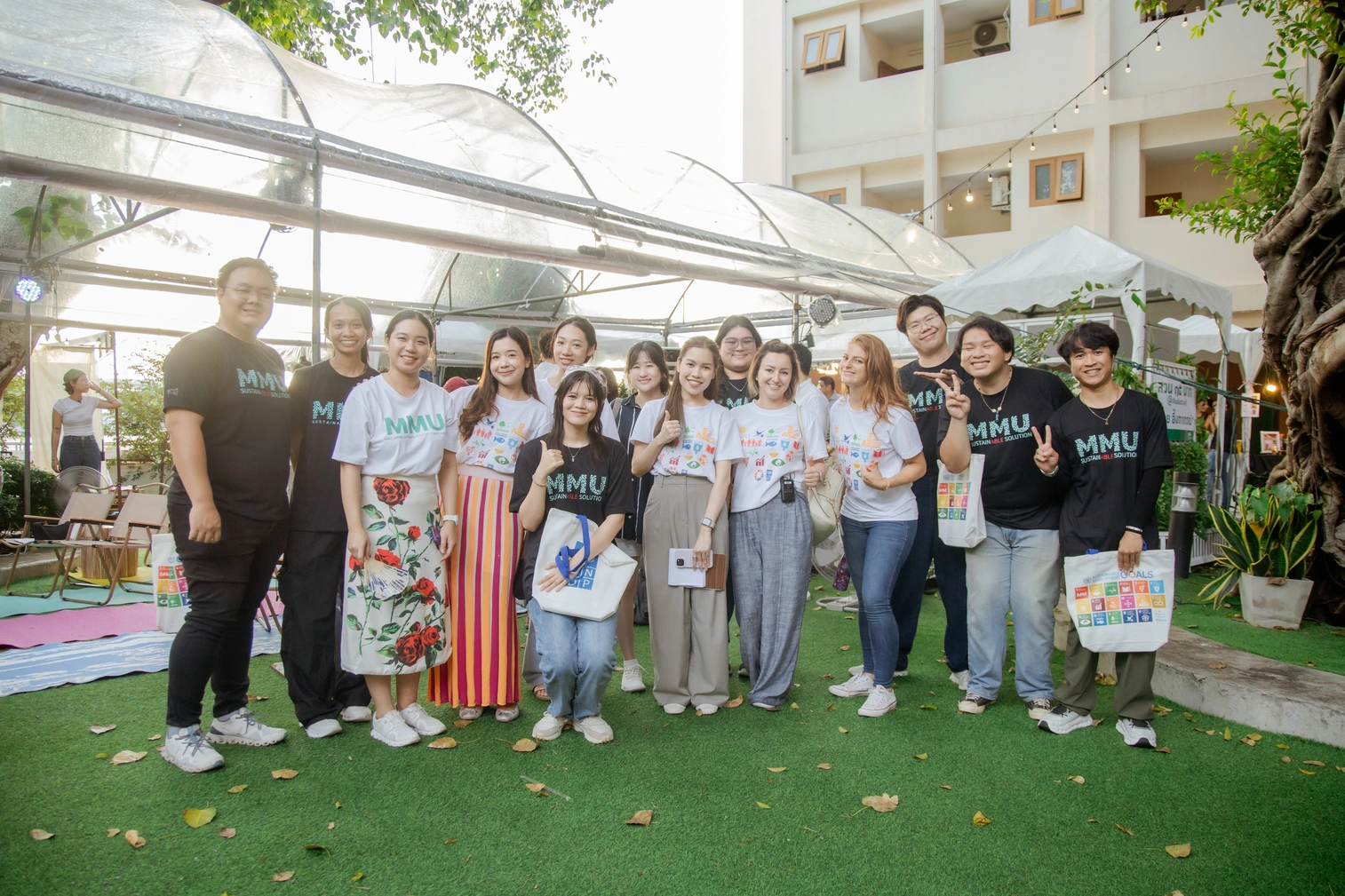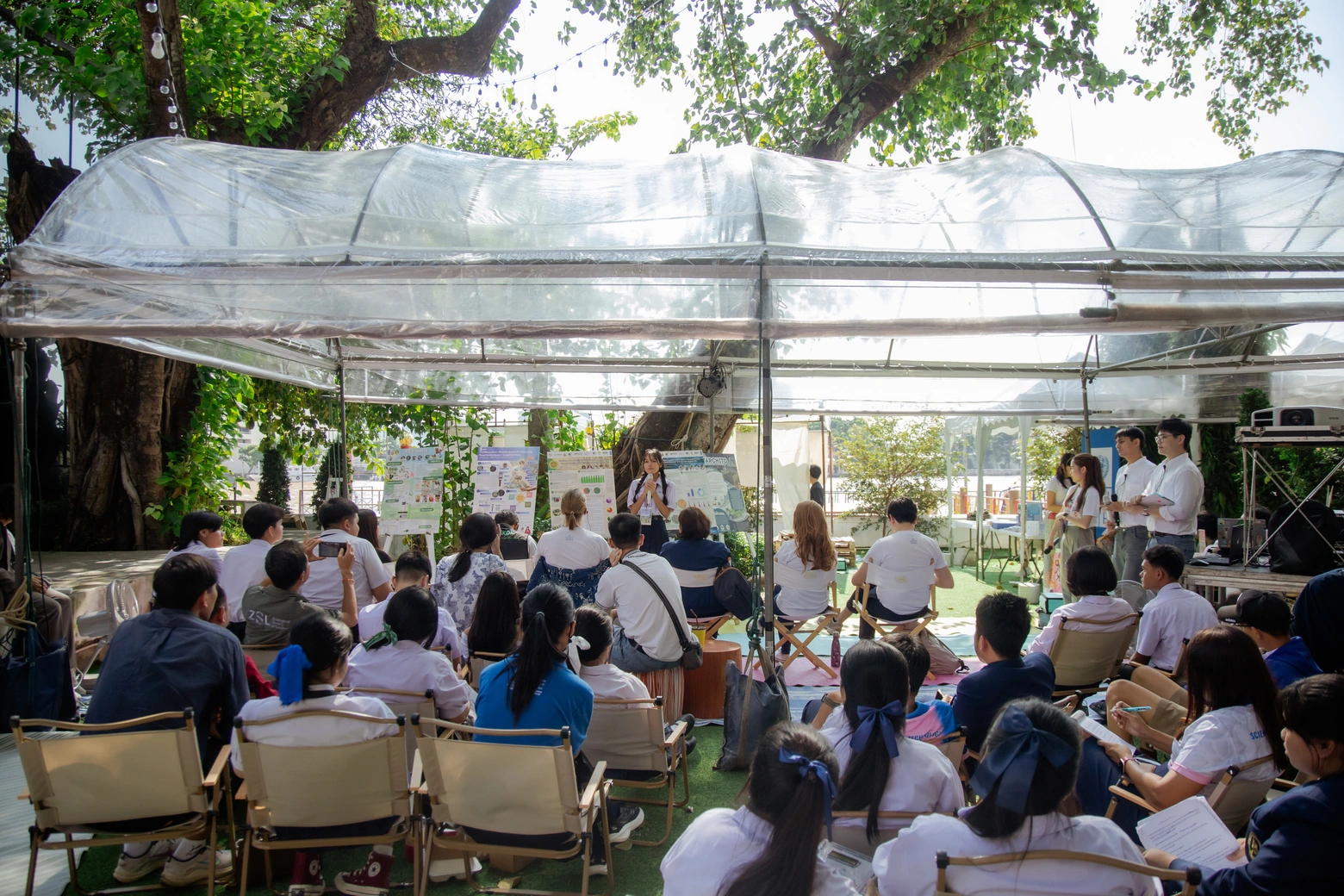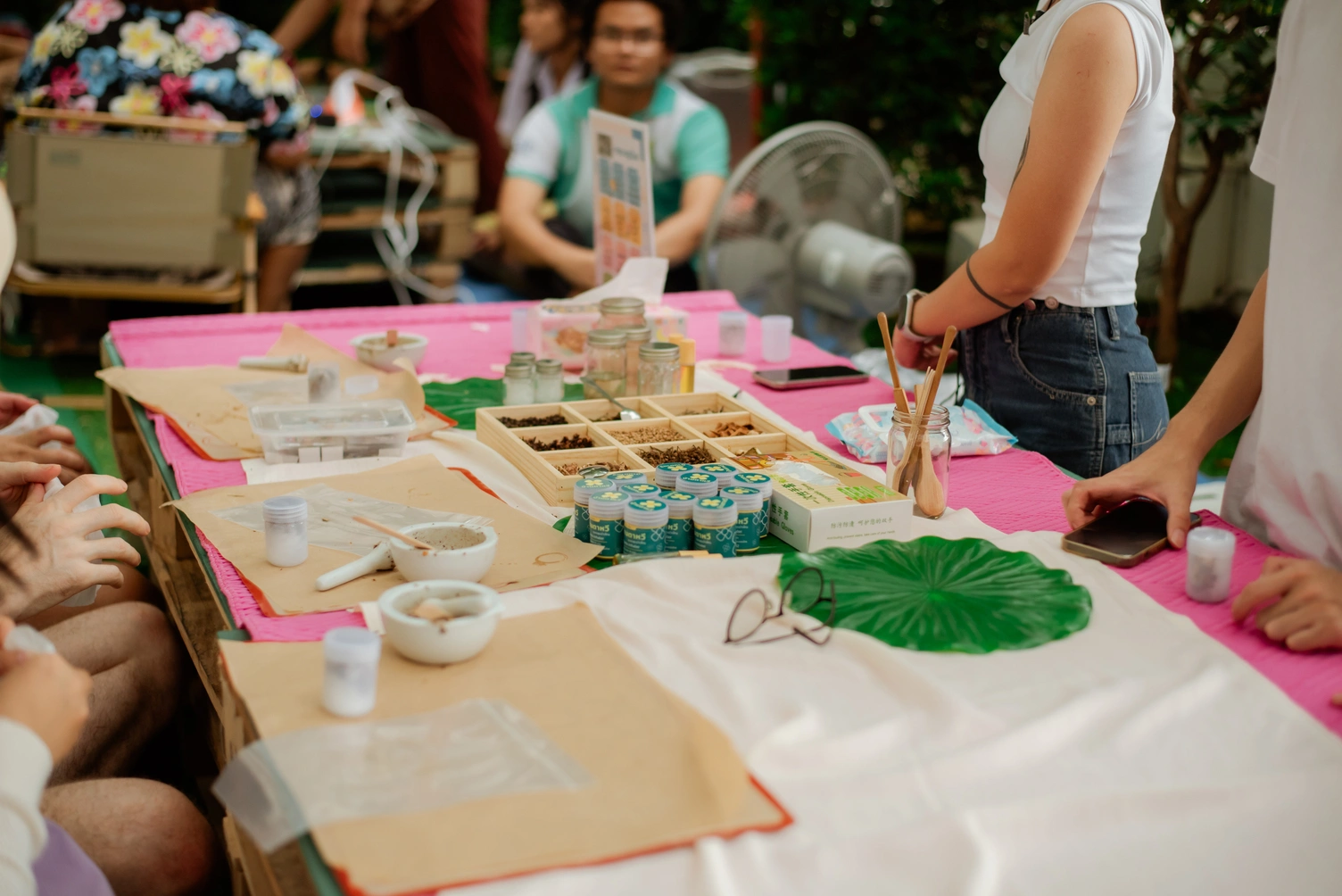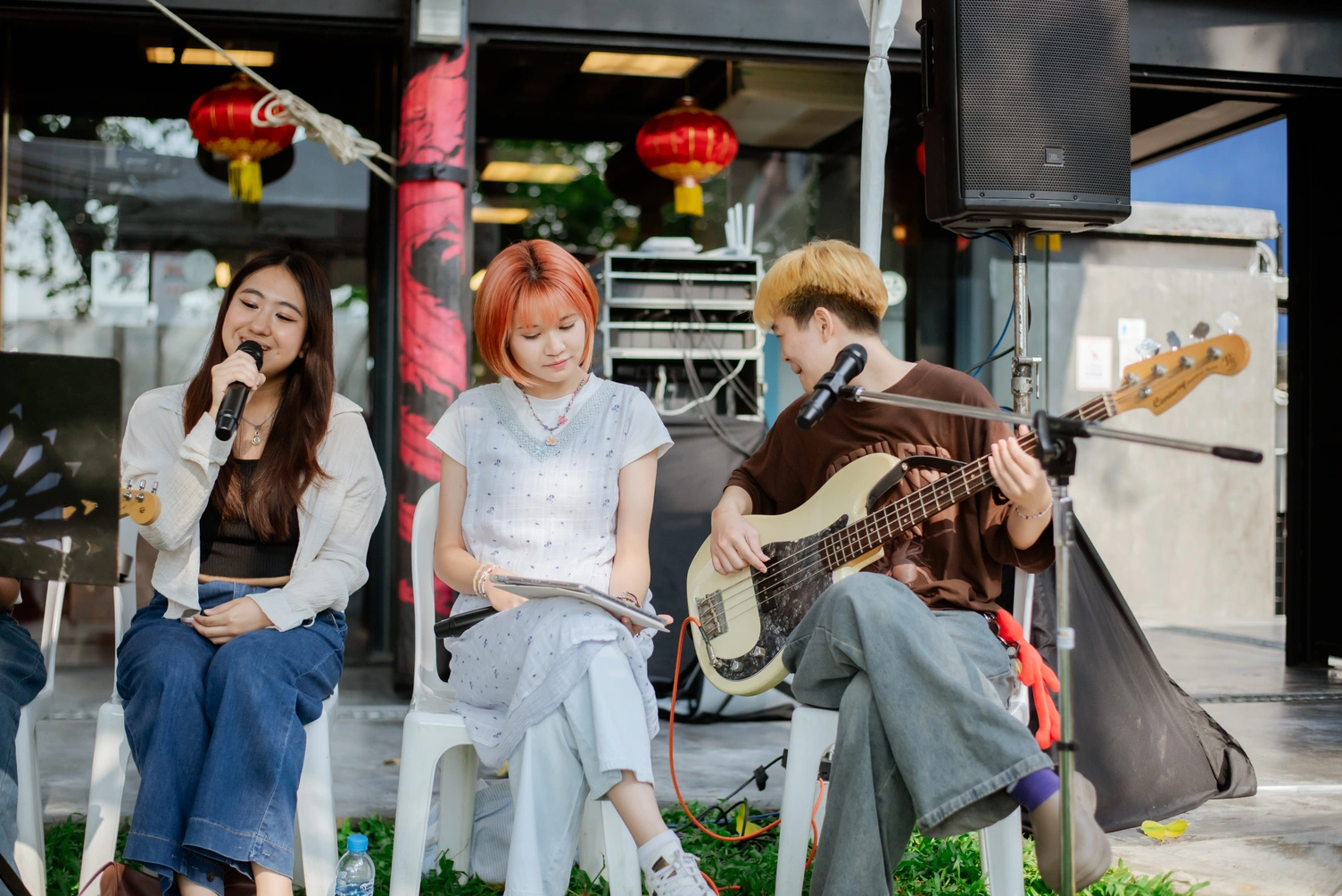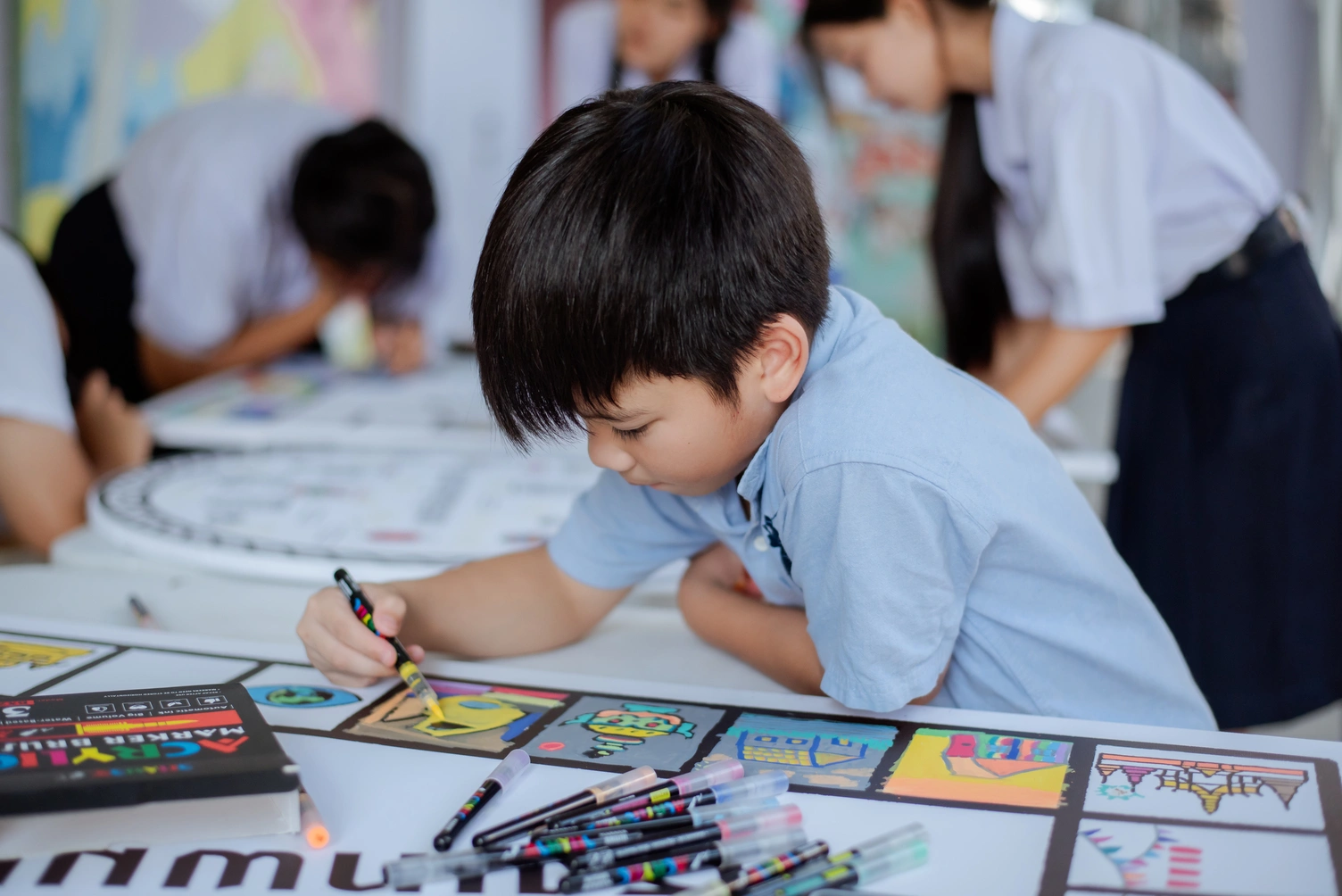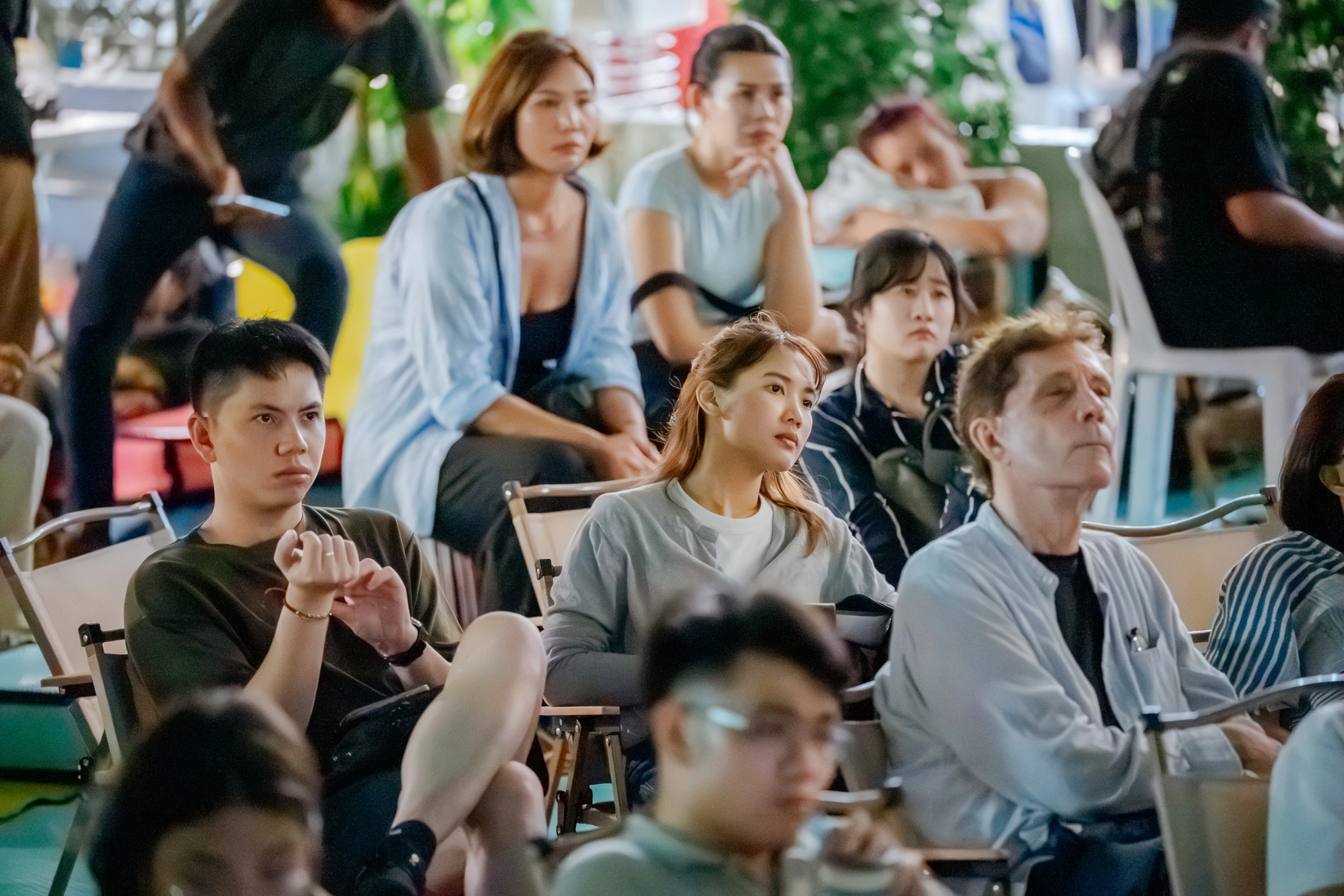CCCL co-organized film screening with UNDP at Talad Noi Museum under BKKCAW
- Info CCCL Film Festival
- Oct 17
- 6 min read
Last weekend on Saturday, October 11, UNDP organized the event “วาดโลกที่ฝัน รันเมืองที่รัก Draw your climate action, run your cities with your voices” under the Bangkok Climate Action Week (BKKCAW) at Talad Noi Museum.
The event featured the Youth Presenting 9 Solutions for Climate Action from Youth Climate Box Contest Project, further with the Drawing Your Climate Action that encouraged participants to draw a picture on the canvas fabric of what would you like to see in the future of Bangkok. The event also had two small workshops on making Yadom and Key chain from plastic bottlecap, a small market selling beverages and souvenirs, and live music acoustic bands to perform during the break session of the event.
Even though the rain was pouring during the day of the event, many people still attended the evening session among the good sunset view of Chao Phraya river. The first evening session was “พัก(ร้อน)ล้อมวงคุยโลกรวน (Climate Screen Talk: Framing Resilient Futures)” which included the panelists from government sector, youth representative, civil society, and social enterprise.

The next session is “พัก(ความ)ร้อนด้วย 4 เรื่องที่อยากเล่าให้ดู (Love the Planet through 4 Stories Told to Watch)” which are
1. ‘MAA’--THE MOTHER’S DREAM by Kittikhun Seniwong Na Ayutthaya (CCCL Alumnus)
Follow a day in the life of Ga-Na, a mother whose world is changing as Pattani Bay transforms.
2. STARS ON THE SEA by JANG SEUNG-WOOK
It was just another ordinary day — until the house begins filling up with water
3. THE FARMER by Sirithan Laowakul
Sheng is a young local politician from Nakhon Sawan, the province where the Chao Phraya river begins. She experienced the worst flood in 2011 where her village was flooded for months. As a documentary photographer, she goes out to follow a story of farmers who are developing new rice varieties that are resilient to extreme weather, drought and floods. But there is no law supporting what they're doing.
4. URBAN FLAMES by Atawee Khositpatipat
This documentary amplifies the voices of residents of all ages from a community in Bangkok’s Khlong Toei District, enduring the sweltering heat of Thailand’s summer. With limited resources, they face the added challenge of rebuilding their lives after a devastating fire destroyed their homes on April 26, 2024.

The last session in closing the event was Q&A time with the filmmakers in “Brown Bag Post-Screening Talk”, the panelists were Kittikhun Seniwong Na Ayutthaya, the film director of ‘MAA’-THE MOTHER’S DREAM; Atawee Khositpatipat, the film director of URBAN FLAMES; Ravadee Prasertcharoensuk, the director of Sustainable Development Foundation; moderated by Dr. Busakorn Suriyasarn, the director of Tonkla Rak Lok Foundation and CCCL’s Team Leader.
Panel Discussion Summary
The discussion opened with a question from Dr. Bussakorn Suriyasarn, who invited the two documentary directors to share their inspirations behind their works.
Atom Atawee Khositpatipat, director of Urban Flame, shared that this was his first time creating a documentary. The concept was inspired by his personal experience of extreme heat in Bangkok, where temperatures soared to 41–43°C. Then, on April 26, 2024, a major fire broke out in the Klong Toey area, prompting him to wonder how “marginalized communities” those “left behind” in society cope with such extreme heat and devastating incidents.

“It really started from me feeling how unbearably hot it was last year, like, really hot. And I started wondering how people living in Klong Toey, in such a crowded community, deal with this kind of extreme heat every day.” - Atawee Khositpatipat, director of Urban Flame
Atom realized that people living with limited resources and little public voice are often the first and hardest hit by the climate crisis. He reflected on the irony that while he was editing his film in an air-conditioned room, the people in his story were struggling against heat and hardship in real life.
“It feels deeply conflicting that, while I sit in an air-conditioned room editing this documentary, the people in my film are facing such hardship out there.” - Atawee Khositpatipat, director of Urban Flame
Meanwhile, Kittikhun Seniwong Na Ayutthaya (Q), director of ‘MAA’-THE MOTHER’S DREAM, shared that his project began with a broad theme, telling stories about the impacts of climate change in Pattani Bay, a region with diverse and complex issues. He eventually decided to focus on the dimension of family, believing it to be the most intimate and emotionally resonant way to reach audiences. Q wanted to show that climate impacts, often perceived as distant, can profoundly shape people’s lives. His film centers on a family that is slowly “falling apart,” with the mother at its heart, fighting to hold everything together.
During filming, Q was deeply moved when a local villager approached him and said, “You’re more educated than us. Can you tell us what we should do to make things better?” That moment made him realize his responsibility as a filmmaker is to shine a light on these people. Even if he didn’t have the answers, he wanted to make sure that audiences would at least see that “Ma” is there.

“One local came up to me, shook my hand, and said, ‘You’re more educated than us. Can you tell us what we should do to make things better?’ I told him honestly, ‘I don’t know.’ But what I did know was that I would do my very best to make this film, so that their stories could finally be seen and heard.” - Kittikhun Seniwong Na Ayutthaya, director of ‘Maa’-The Mother’s Dream
The Role of Film in Raising Awareness and Driving Change
The speakers reflected on the power of cinema to be more than just entertainment that films can serve as catalysts for social awareness and change.
Q emphasized that his ultimate goal is for his films to spark conversations. If his work can encourage even a small discussion about these pressing issues at home or among friends, to him, that would already be a success.
Ravadee, one of the discussants, praised both directors for choosing to highlight “vulnerable and invisible groups”, people whose lives and struggles are rarely seen in mainstream cinema, which often prioritizes commercial appeal.
The conversation shed light on the gap between real problems on the ground and public awareness. In this sense, films can act as a bridge connecting different realities and helping society see the unseen.

“A film can only truly make a difference when the people who see it become aware of the problem and keep pushing to solve it with purpose and persistence.” - Ravadee Prasertcharoensuk, the director of Sustainable Development Foundation of Thailand
Gender Perspective: The Role of Mothers and Women
The panel also explored gender perspectives, noting that two of the four screened documentaries center on mothers as key characters. Ravadee observed that women, especially mothers, often carry the heaviest burdens in times of crisis. In ‘Maa’-The Mother’s Dream, for instance, the mother works tirelessly from dawn to dusk while facing the threat of losing both her family and her way of life.
Critique of Government Policy and Development Practices
Drawing from her long experience working with communities and environmental issues, Raewadee offered a critical view of state policies that form the backdrop of many problems depicted in the films.
Unequal Policies: Government plans often fail to reflect or understand the real lives of communities, whether fishermen, farmers, or urban poor, leaving them without access to measures that reduce climate-related risks.
Development that Worsens Impact: Q added that conditions in Pattani Bay have deteriorated further due to a large state-led megaproject that misunderstood local contexts, worsening the existing problems.
Lack of Holistic Thinking: Raewadee stressed that Pattani Bay’s degradation is not solely caused by global warming but by fragmented resource management and the neglect of local wisdom.
Legal Gaps: Current laws do not recognize the livelihoods of female fishers, meaning they are often excluded from state compensation or assistance when disasters occur because they are not registered as boat owners.
Community Rights: The “fish homes” shown in ‘Maa’-The Mother’s Dream highlight larger issues about community rights to access and manage local resources, rights that often clash with overlapping government projects.

Using Film as a Tool for Policy Dialogue
The panelists and organizers also discussed how these documentaries could be used strategically to influence policy and foster deeper understanding.
‘Maa’-The Mother’s Dream is planned to be screened at a Pattani Bay conference, where stakeholders and community members can jointly examine the issues portrayed. The discussants also proposed that Urban Flame should be screened in urban communities facing similar challenges to encourage dialogue and local solutions.
Furthermore, the organizers aim to bring these films to lawmakers, political parties, and government agencies, including screenings in Parliament, to raise awareness and inspire policymakers to revisit frameworks, laws, and resource allocation, ensuring they better reflect realities on the ground.
Ultimately, the discussion concluded that storytelling through film can be a powerful tool to connect communities, shape empathy, and spark policy-level change from the grassroots to the national level.





